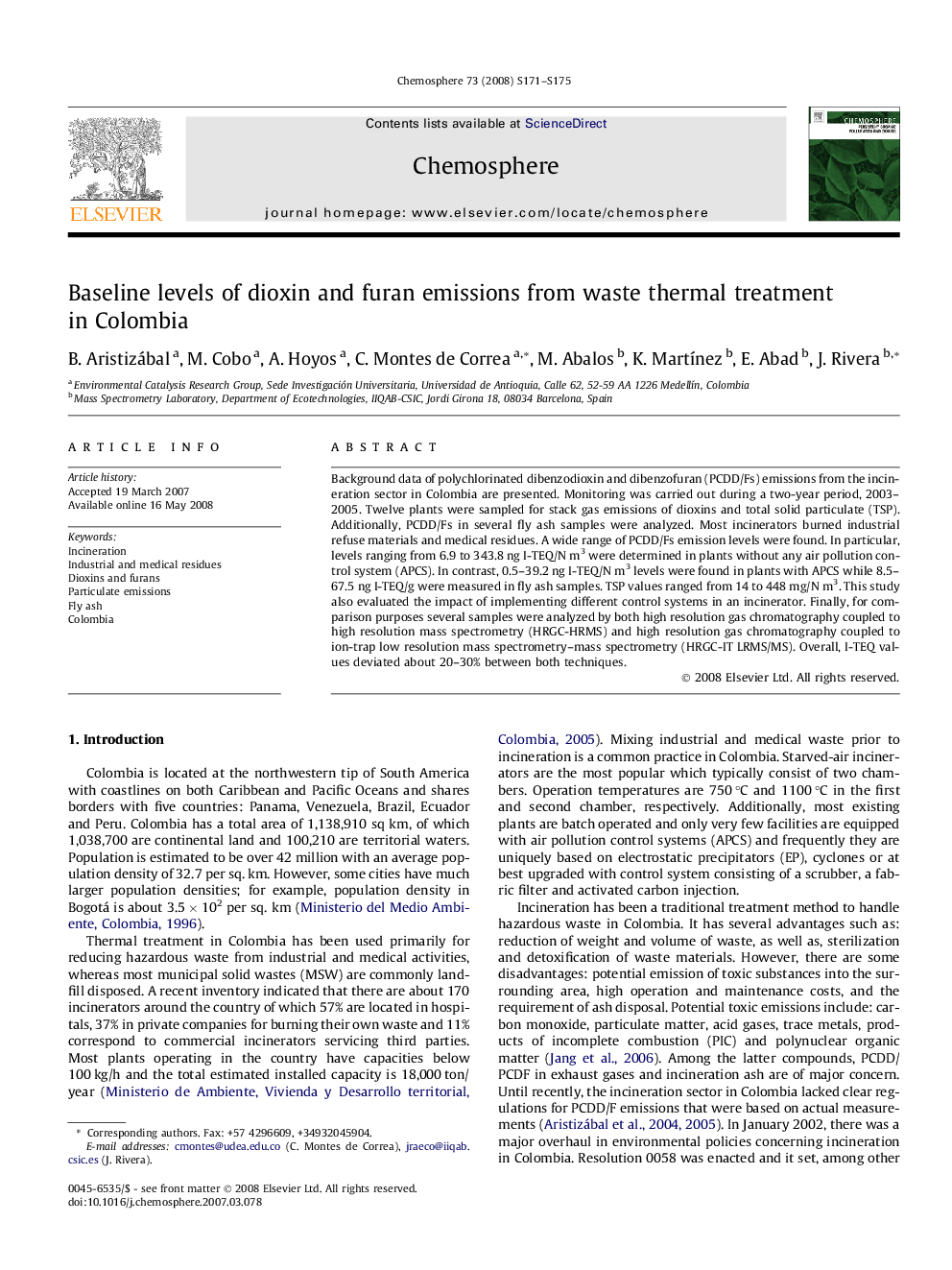| Article ID | Journal | Published Year | Pages | File Type |
|---|---|---|---|---|
| 4413869 | Chemosphere | 2008 | 5 Pages |
Background data of polychlorinated dibenzodioxin and dibenzofuran (PCDD/Fs) emissions from the incineration sector in Colombia are presented. Monitoring was carried out during a two-year period, 2003–2005. Twelve plants were sampled for stack gas emissions of dioxins and total solid particulate (TSP). Additionally, PCDD/Fs in several fly ash samples were analyzed. Most incinerators burned industrial refuse materials and medical residues. A wide range of PCDD/Fs emission levels were found. In particular, levels ranging from 6.9 to 343.8 ng I-TEQ/N m3 were determined in plants without any air pollution control system (APCS). In contrast, 0.5–39.2 ng I-TEQ/N m3 levels were found in plants with APCS while 8.5–67.5 ng I-TEQ/g were measured in fly ash samples. TSP values ranged from 14 to 448 mg/N m3. This study also evaluated the impact of implementing different control systems in an incinerator. Finally, for comparison purposes several samples were analyzed by both high resolution gas chromatography coupled to high resolution mass spectrometry (HRGC-HRMS) and high resolution gas chromatography coupled to ion-trap low resolution mass spectrometry–mass spectrometry (HRGC-IT LRMS/MS). Overall, I-TEQ values deviated about 20–30% between both techniques.
